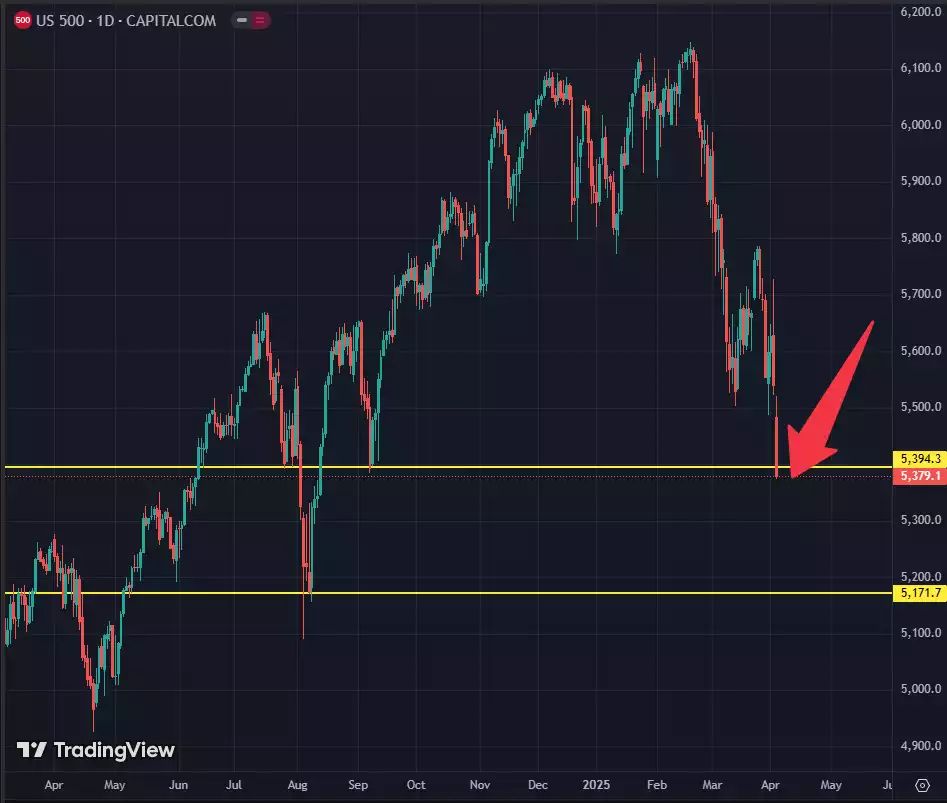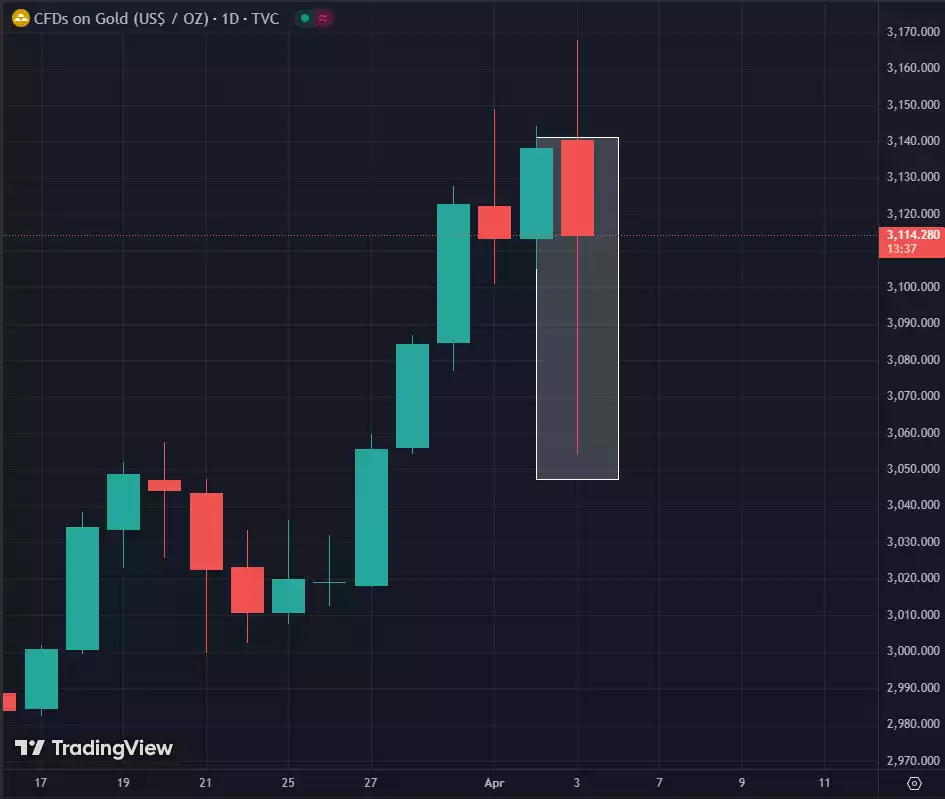US Stocks’ Worst Day Since March 2020
News
|
Posted 04/04/2025
|
1706
Global markets were rocked yesterday as a fresh wave of tariffs sent investors running for cover, sending US stock indices to their steepest one-day declines since March 2020. Let’s take a look at a chart and some technical analysis to see what could happen next.
The selling wiped out billions in market value and rekindled worries about a sustained economic slowdown. Below is a major support level that was just broken. The fall through this price floor could lead to another large fall to the next major support level below (in yellow).

The downturn began after the US administration announced extra tariffs on imported goods across the board, which was seen as a response in an exchange of tit-for-tat over intellectual property rights as well as other trade issues. Some major US trading partners soon thereafter said they would respond with tariffs as well, escalating concerns of a tit-for-tat trade war.
From the opening bell, equities plummeted as risk assets were being sold by investors. The Dow Jones Industrial Average at market close fell more than 3%, the S&P 500 fell more than 3.5%, and the Nasdaq Composite fell nearly 4%. Sellers said that there was pressure being exerted on all sectors from technology to consumer staples and industrials.
The hopes that it would all be just talk and threats were quickly shattered. The effect of Trump’s announcement triggered a similar response to the March 2020 selloff.
The day's hard losses also served to propel an aggressive rise in market volatility. The VIX rocketed to its highest levels since the beginning of the pandemic. Higher volatility has the potential to amplify price moves and is also considered a reliable fear gauge. Algorithmic traders and hedge funds scrambled to rebalance positions, contributing to the volatility spike.
Economic Concerns Loom
In addition to the immediate impacts, there are more lasting effects if these conditions persist, some analysts warn. Higher import prices and supply chain disruptions can push up costs, boost the cost of doing business, and even cut into consumer spending. This would erode the profitability of corporations and temper economic growth when the United States is already struggling with inflation and other pandemic-related challenges.
This may add huge pressure for America’s central bank to finally cut, but based on Trump’s stance and the price charts, much more pain could be on the way. It will be interesting to see if the Nonfarm Payroll announcement tonight will even put a dent in the stock market. Tariff policies seem to have become the biggest market movers for now.
Gold has been one of the biggest beneficiaries of all the bloodshed. It has continuously hit new all-time highs, although it did just have a washout overnight, potentially wiping out over-leveraged traders. For those waiting for a dip, we finally got one.
